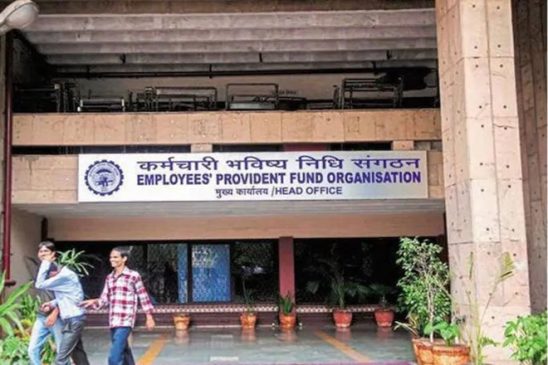The government has notified the rules for taxing the interest earned on provident fund contributions beyond a limit. What is the limit, how much will the tax be, and what is the objective of the move?
Following its Budget announcement in February, the Finance Ministry has now notified the rules for taxing interest income on contributions made to the Employees’ Provident Fund (EPF) beyond Rs 2.5 lakh (for private sector employees) and Rs 5 lakh (for government sector employees). Beginning this fiscal, the government will tax interest on contributions made in excess of these limits, with separate accounts to be maintained within the provident fund account for 2021-22 and subsequent years for taxable contribution and non-taxable contribution made by an individual.
What is the tax on EPF contributions?
In February, the Budget proposed that tax exemption will not be available on interest income on PF contributions exceeding Rs 2.5 lakh in a year. Although this has been a concern for salaried individuals contributing to EPF, it will impact only those who contribute more than Rs 2.5 lakh in a year — and it will not affect their existing corpus or the aggregate annual interest on that.
In March, the government introduced an amendment to the Finance Bill, 2021 in which it proposed to double the cap on contribution from Rs 2.5 lakh to Rs 5 lakh for tax-exempt interest income, if the contribution is made to a fund where there is no contribution by the employer. With this, the government provided relief for contributions made to the General Provident Fund that is available only to government employees and there is no contribution by the employer.
What are the rules to enable this taxation?
The rules were notified by the Finance Ministry on August 31. In an amendment to the Income-Tax Rules, 1962 that will come into effect from April 1, 2022, the Central Board of Direct Taxes (CBDT) has inserted Rule 9D, according to which income through interest accrued during the previous year that is not exempt (over Rs 2.5 lakh for private and Rs 5 lakh for government employees) shall be computed as the interest accrued during the previous year in the taxable contribution account. Separate accounts within the provident fund account shall be maintained during 2021-2022 and subsequent years for an individual’s taxable contribution and non-taxable contribution.
The EPFO, however, is yet to formalise the separation of taxable and non-taxable contribution in their accounts. Some EPF board members said the task to separate the accounts for such contributors will take time. “Data will need to be aggregated and then the separate accounting process has to be determined for such accounts. Details are yet to be finalised,” a member said.
The CBDT has stated that the closing balance on March 31, 2021 and the interest accrual on it will be treated as the non-taxable component. The taxable contribution account will consist of contributions made by the individual in the account during the previous year (2021-22) and subsequent years in excess of the threshold limit.
Why the proposal?
The Budget proposal had noted that the government has found instances where some employees are contributing huge amounts to these funds and are getting the benefit of tax exemption at all stages — contribution, interest accumulation and withdrawal. With an aim to exclude high net-worth individuals (HNIs) from the benefit of high tax-free interest income on their large contributions, the government has proposed to impose a threshold limit for tax exemption. This will be applicable for all contributions beginning April 1, 2021.
“This fund is actually for the benefit of the workers, and workers are not going to be affected by it,” Finance Minister Nirmala Sitharaman had said while presenting the Budget in February. “… It is only for big-ticket money which comes into it because it has tax benefits and also (is) assured about 8% return. You find huge amounts, some to the extent of Rs 1 crore also being put into this each month. For somebody who puts Rs 1 crore into this fund each month, what should be his salary? So, for him to give both tax concessions and also an assured 8% return, we thought this is probably not comparable with an employee with about Rs 2 lakh.”
How will it get taxed?
For an individual in the higher tax bracket of 30%, the interest income on contribution above Rs 2.5 lakh would get taxed at the same marginal tax rate. What this means is that if an individual contributes Rs 3 lakh every year to the provident fund (including the voluntary PF contribution) then the interest on his contribution above Rs 2.5 lakh —that is, Rs 50,000 — will be taxed. So, the interest income of Rs 4,250 (8.5% on Rs 50,000) will be taxed at the marginal rate. If the individual falls in the 30% tax bracket, he/ she will have to pay tax of Rs 1,325.
For an individual contributing Rs 12 lakh in a year, the tax will be applicable on interest income on Rs 9.5 lakh (Rs 12 lakh minus Rs 2.5 lakh). In this case, the tax liability would amount to Rs 25,200.
Will it get taxed for perpetuity?
As per the notification, the interest income on the additional contribution (over Rs 2.5 lakh for private and Rs 5 lakh for government employees) for a year will get taxed every year. This means that if your annual contribution to PF in FY22 is Rs 10 lakh, the interest income on Rs 7.5 lakh will get taxed not only for FY22 but also for all subsequent years. If the PF contribution is the same for FY23, the tax will have be paid on interest income on Rs 15 lakh. Also, if you earned interest of 8.5% last year, and if you fall in the highest tax bracket, then the following year you will earn effectively around 5.85% on the additional contribution (assuming the interest rate is unchanged).





































